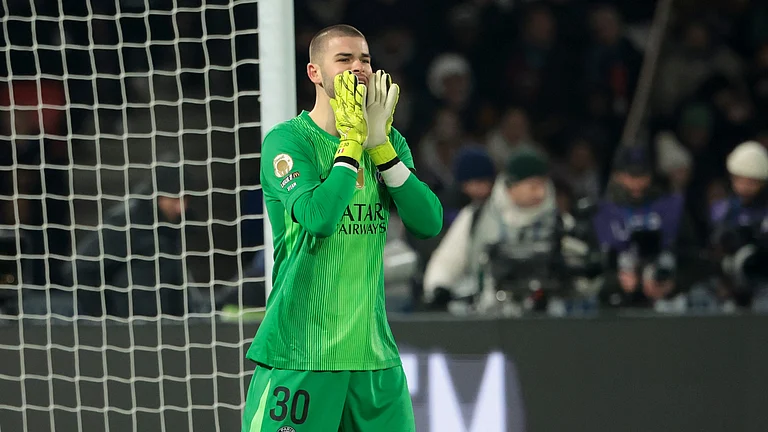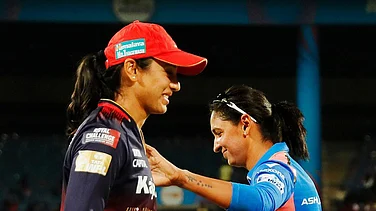When Mithali Raj was young, she wanted to be old.
Proper old. Like her grandparents, because then she could sleep to her heart’s content.
“I’d have to get up at 4 in the morning for practice, and I’d see my grandparents cosy and asleep in their warm blankets on wintry mornings. I would think, ‘I want to be old so that even I can sleep like this,’” Raj recalled with a laugh on the show ‘Breakfast with Champions’ a few years ago.
Raj never wanted to become a cricketer. It was her Air Force father, Dorai Raj, who made her play, in part to make her a disciplined person.
“I used to hate my dad for a long time,” Raj said in another interview. “I’m grateful to him now because I enjoy the perks of being individual [independent] financially, emotionally, name it. As a woman, I’m stronger than what I was.”
The last line by Raj hits the nail on the head about what cricket has come to mean to Indian women. It’s more than a sport. It’s a career, it’s a way to financial and overall independence, and to a distinctive identity in a male-dominated culture.
Raj grew up in Hyderabad. Around the same time, in Chakda, Bengal, another girl, born just eight days before Raj, was also taking her first steps in cricket. Her name was Jhulan Goswami.
If Raj was a short batswoman (5 ‘4’), Goswami was a tall bowler (6 ft). If Raj had little initial interest in cricket or sports, Goswami loved football, and then cricket.
Ultimately, both became India legends. They are retired now, but through their stories the growing relevance of cricket to Indian women becomes apparent.
“Cricket is everything in my life. It is only because of cricket I am here,” Goswami once said.
The Indian cricket board is a much-maligned body, sometimes justifiably so, sometimes not so fairly. But even cynics will struggle to find much wrong with their two recent, major decisions regarding women’s cricket. One is increasing the match fees of contracted women players to the same level as men (although not the annual retainer), and two, the launch of the women’s IPL (WIPL) next March.
Earlier, women’s cricket was run by the WCAI (Women’s Cricket Association of India). They did a commendable job. But BCCI took charge of the game in 2006, and thanks to their clout and financial might, things have improved for women players.
Former player and now broadcaster, Snehal Pradhan, once wrote in The Cricket Monthly, “In 2006, once the BCCI came into the picture, trains became planes, dormitories became hotel rooms, and newspapers were read rather than sat on. From never hoping to make money from cricket, we were suddenly the recipients of (very basic) match fees and daily allowances. We entered the world of neutral umpires, video analysis and semi-professional cricket. We could stop worrying about clean drinking water and focus more on the game.”
Contemporary stars, such as captain Harmanpreet Kaur, Jemimah Rodrigues and Smriti Mandhana have welcomed the WIPL announcement. Apart from the obvious monetary aspect, they spoke about the cricketing merits of the tournament.
For example, Harmanpreeet said, it would give players more opportunities to play against international level players.
“There’s a big gap between domestic and international cricket,” she told a sports network, “which some cricketers were not able to match, because even if you play well in domestic cricket and then suddenly play international games, you’re not able to understand what to do and how to do it. But in the IPL, when they get a chance to play against overseas players, that will be something that will give them a platform, they can play well, they can understand what is international cricket.”
While the IPL has been criticised by many for its gaudy commercialism, no one doubts that it has given domestic players a chance to shine on the big stage.
Rodrigues expects the women’s tournament too to have a similar impact.
“I'm sure that we are going to get so much more talent that's going to come out from here,” she said.
Smriti Mandhana said something similar.
“It’s going to help the domestic girls massively because that sort of experience in playing in leagues like this will get a lot of things sorted for women’s cricket,” she said. “Grassroots-wise, we have seen how the Big Bash and The Hundred have helped Australia and England, respectively, in their domestic setup as well as other things. So, I’m really happy the Indian team will benefit a lot from the Women’s IPL, but it’s also going to benefit a lot of domestic girls which I’m looking forward to.”
Just a couple of days ago, Adoni, a municipality of 38.16 sq. km. in Kurnool district, Andhra Pradesh, was in the news. Anjali Sarvani, who hails from the region, was selected in the Indian squad for the T20I series against Australia, starting on December 9 in Mumbai. The sprinter turned fast bowling all-rounder, whose father is a teacher in a village school, is one of the exciting new prospects in Indian women’s cricket.
The WIPL promises to unearth many such talents. It is, in the true sense, a win for Indian women.


























